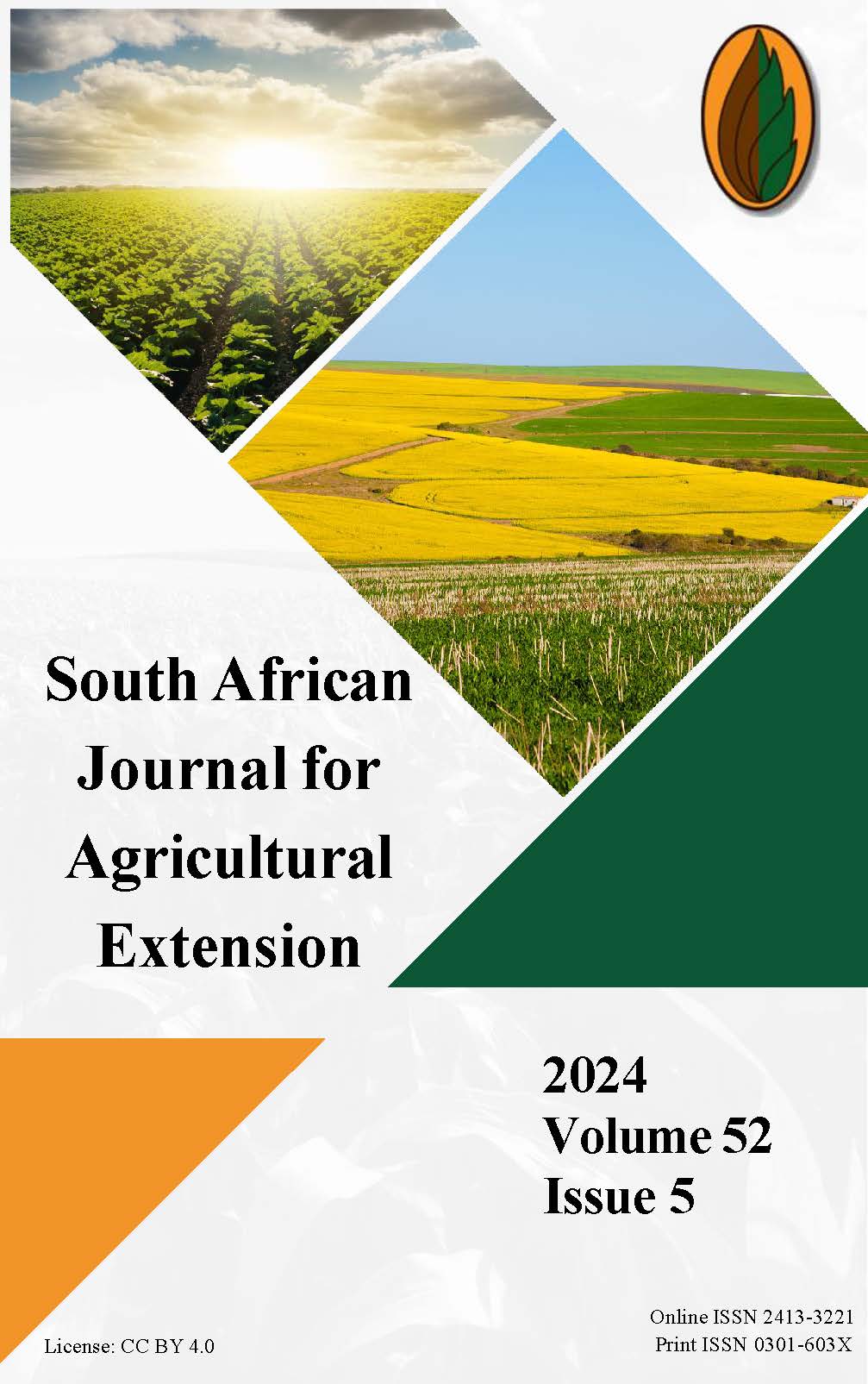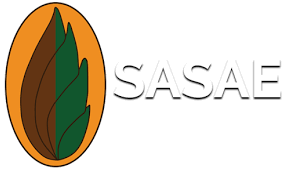Farmers' Knowledge, Attitude, and Practices Towards Fertiliser Indicator Pricing Approach in Mvomero District, Tanzania
DOI:
https://doi.org/10.17159/2413-3221/2024/v52n5a16388Keywords:
Fertiliser Indicative Price, Knowledge, Attitudes and Practices, TanzaniaAbstract
Severe irregularities and implementation challenges in Mvomero District, Tanzania, marred the implementation of the Fertiliser Indicative Pricing Approach (FIPA). However, the questions on the levels of farmers' knowledge, attitudes and practices, knowledge categories that farmers have the least knowledge of, reasons informing attitudes and dominant ineffective FIPA practices are yet to be adequately addressed. This study assessed farmers' awareness, attitudes, and practices; knowledge categories that farmers have the least knowledge; reasons for informing attitudes; and dominant ineffective FIPA practices. Interview schedules and in-depth interviews were conducted during data collection. Qualitative data was analysed using content analysis. Farmers' attitude was gauged using a five-point Likert scale, and farmers' knowledge, knowledge categories farmers had the least knowledge, reasons informing attitudes and dominant ineffective FIPA practices were described using descriptive statistics. Results revealed that most respondents had low levels of knowledge, unfavourable attitudes and ineffective practices towards FIPA. Also, knowledge categories that farmers had the least knowledge of comprised fertiliser indicative prices, FIPA rules and regulations, and key FIPA actors. Results further indicate that high fertiliser prices, weak FIPA monitoring and low-quality fertiliser were the reasons for unfavourable attitudes. In addition, non-adherence to indicative prices, rules and regulations, and the presence of low-quality fertiliser were the dominant ineffective practices of FIPA. The study generally indicates that farmers' low awareness concerning FIPA is a major threat to FIPA implementation. The findings imply that a lack of farmers' awareness of FIPA contributes to irregularities and underperformance manifested in individualistic opportunistic behaviours. Rogue actors abuse farmers' ignorance of program key result areas by maximising their utility at the expense of the majority of farmers. Concerted efforts should be directed at training and awareness building, effective monitoring and contract enforcement on indicative price and quality standards.
Downloads
References
ACT AND MATCHMAKER ASSOCIATES., 2012. Distribution, access and application of agricultural inputs. Agricultural Council of Tanzania, Matchmaker and Associates.
AGRA., 2014. An assessment of agricultural policy and regulatory constraints to agribusiness investment in Burkina Faso, Ethiopia, Ghana, Nigeria and Tanzania. Nairobi, Kenya: Alliance for a Green Revolution in Africa.
BABBIE, E., 1990. Survey research methods. 2nd edn. Belmonth: Wadsworth.
BAILEY, B.K., 1994. Methods of social research. New York: The Free Press Cllier-MacMilan Publishers.
BAILEY, D.K., 1998. Methods of social science research. London: The Free Collier Macmillan Publisher.
BALTZER, K. & HANSEN, H., 2012. Agricultural input subsidies in Sub-Saharan Africa: Evaluation study. Denmark: Ministry of Foreign Affairs.
BENSON, T., KIRAMA, S. & SELEJIO, O., 2013. The supply of inorganic fertilisers to smallholder farmers in Tanzania. Washington D.C: International Food Policy Research Institute.
BARDHAN, P. & MOOKHERJEE, D., 2000. Capture and governance at local and national levels. Am. Econ. Rev., 90(2): 135–139.
BUMB, B.L., ARIGA, J., ANAND, M., CAMERON, A. & NKONYA, N. M., 2021. Assessment of the fertiliser market and bulk procurement system in the United Republic of Tanzania. Policy Report. Monitoring and analysing food and agriculture policies. Rome: Food and Agriculture Organization.
CAGLEY, J.H., GUGERTY, P.M.K. & PLOTNICK, P.R., 2009. The political economy of fertiliser policy in Tanzania. Washington, D.C: University of Washington Press.
COOKSEY, B., 2012. Politics, patronage and projects: The political economy of agricultural policy in Tanzania, FAC Working Paper 40. Brighton: Future Agricultures Consortium.
FAO., 2021. The state of food and agriculture. Available from: https://www.fao.org/publications/sofa/sofa-2021/en
GOEB, J. & LUPI, F., 2021. Pesticides’ true colours: The effects of a farmer-to farmer training program on pesticide knowledge. Michigan: Michigan State University Press.
IFDC., 2012a. Tanzania fertiliser assessment. muscle shoals. USA: International Fertiliser Development Centre.
IFPRI., 2012. The supply of inorganic fertilisers to smallholder farmers, evidence for fertiliser policy development. Discussion Paper 01230. Washington D.C: International Food Policy Research Institute.
KATO, T., 2016. Agricultural input subsidies in sub-Saharan Africa – the case of Tanzania. Doctoral thesis, University of Sussex.
KOTHARI, C.R., 2004. Research methodology: Methods and techniques. 2nd edn. New Delhi: New Age International Publishers.
MALHOTRA, K., 2013. National agricultural input voucher scheme (NAIVS 2009–2012), Tanzania: Opportunities for improvement, REPOA Brief No. 40.
MASINJILA, S. & LEWIS, L., 2018. The future of smallholder farmer support in Tanzania: Where to after the national agricultural input voucher scheme? Johannesburg: African Centre for Biodiversity.
MATHER, D. & NDYETABULA, D., 2016. Assessing the drivers of Tanzania’s fertiliser subsidy programs from 2003-2016: An application of the kaleidoscope model of policy change. Available from: https://ageconsearch.umn.edu/record/259516
MBAGA-SEMGALAWE, Z. & FOLMER, H., 2000. Household adoption behaviour of improved soil conservation: The case of the North Pare and West Usambara Mountains of Tanzania. Land Use Policy., 17(4): 321 – 336.
MGENDI, G., MAO, S. & QIAO, F., 2022. Does agricultural training and demonstration matter in technology adoption? The empirical evidence from small rice farmers in Tanzania, technology in society. Available from: https://www. Sciencedirect.com/science/ article/abs/pii/ S0160791X22 001658? via%3 Dihub
MINDE, I.J. & NDLOVU, P., 2007. How to make agricultural subsidies smart. Paper Prepared for Contribution to the Ministerial Seminar, Regional Strategic Analysis and Knowledge System for Southern Africa (ReSAKSS-SA), Maputo, Mozambique, 8th June, p. 27.
BALTZER, K. & HANSEN, H., 2011. Agricultural input subsidies in Sub-Saharan Africa: Evaluation study. Ministry of Foreign Affairs of Denmark.
MWAIJANDE F., 2014. A study on electronic monitoring for the implementation of National Agricultural Inputs Voucher Subsidy Programme. Tanzania: Dar es Salaam.
NYANDA, S., 2022. Fertiliser application by small-scale farmers in the post-colonial Tanzania: Lessons from the fertiliser subsidy programmes, the sub–Saharan. J. Soc. Sci. Humanit., 1: 23-31.
PAN, L. & CHRISTIAENSEN, L., 2011. Who Is Vouching for the Input Voucher? Decentralized Targeting and Elite Capture in Tanzania. World Dev., 40(8): 1619-1633.
RICKER-GILBERT, J., 2020. Inorganic fertiliser uses among smallholder farmers in sub-Saharan Africa: Implications for input subsidy policies. In Y. Gomez, S. Paloma, L. Riesgo & K. Louhichi (eds.), The role of smallholder farms in food and nutrition security. Michigan: Springer International Publishing, p. 17.
SINGLETON, R.A., STRAITS, B.C. & STRAITS, M.M., 1993. Approaches to social science research. New York: Oxford University Press.
SELEJIO, O. & LASWAY, J., 2019. Economic analysis of the adoption of inorganic fertilisers and improved maize seeds in Tanzania. Available from https://www.efdinitiative.org/publicatio ns/econo mic-analysis-adoption-inorganic-fertilisers-and-improved-maize-seeds-tanzania
URT., 2017. Mvomero District Investment Profile. Dodoma: Institute of Rural Development Planning.
URT., 2018. Agricultural Sector Development Strategy Phase II. Dar es Salaam: Ministry of Agriculture and Food Security.
WORLD BANK., 2014. Tanzania – public expenditure review: National agricultural input voucher scheme. Washington D.C: World Bank.
XIE, Z.F., WEI, Q.F. & ZHENG, X.L., 2017. Development of health education evaluation system for patients with colostomy based on KAP model. Chin. J. Health Educ., 33(5): 544 – 547.
Downloads
Published
Issue
Section
License
Copyright (c) 2024 A.O. Malinza, C. Mahonge

This work is licensed under a Creative Commons Attribution 4.0 International License.








.png)